The Good Ship Albion
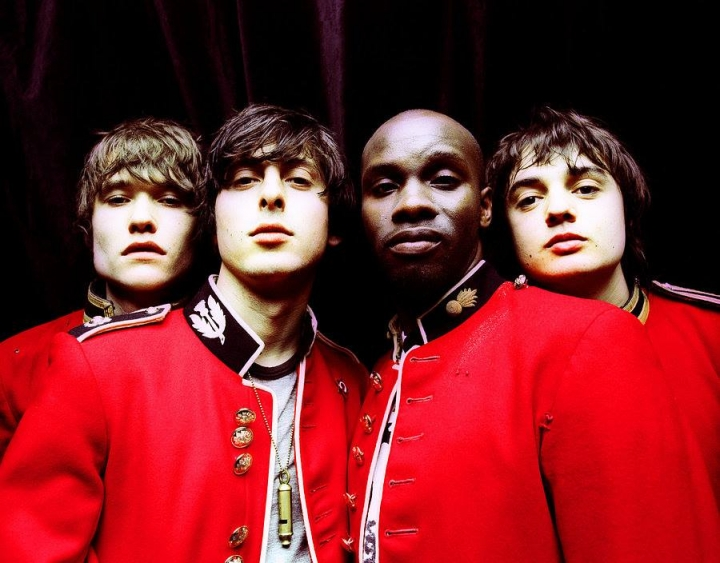
In the annals of British indie rock, few bands have encapsulated the spirit of romantic rebellion and chaotic camaraderie like The Libertines. Their journey is a tapestry woven with poetic aspirations, internal conflicts, and a relentless pursuit of an idealised England they dubbed Albion. This is the comprehensive chronicle of their voyage.
Formation and Early Days (1997–2002): The Genesis of Albion
The story of The Libertines begins in the late 1990s, when founding members Peter Doherty and Carl Barât met under serendipitous circumstances. Barât was studying drama at Brunel University in Uxbridge and living in a Richmond flat in south-west London with Amy-Jo Doherty, Peter’s older sister. Their friendship quickly deepened as they discovered a shared passion for songwriting, poetry, and romantic ideals. Recognising their creative synergy, Barât dropped out of his course after two years, while Doherty left his English literature studies at Queen Mary, University of London, after just one. They moved into a flat together on Camden Road in North London, which they dubbed “The Albion Rooms.”
Their early days were spent experimenting and dreaming. Alongside their neighbour, Steve Bedlow, known affectionately as “Scarborough Steve”, they formed a band called 'The Strand'. The name didn’t stick; they eventually settled on “The Libertines,” inspired by Marquis de Sade’s unfinished novel The Lusts of the Libertines. Other options, such as 'The Albions' (a poetic name for Britain), were considered but ultimately rejected.
The duo’s creative partnership blossomed within the walls of The Albion Rooms, where the lines between art, life, and friendship began to blur. They developed an intense, almost brotherly bond, often describing themselves as two halves of the same soul. Obsessed with notions of freedom, bohemian lifestyles, and English romanticism, they crafted songs that were raw, poetic, and laced with a sense of yearning for a mythical place they called 'Albion', a utopian vision of England where rules and social constraints dissolved in favour of poetic rebellion.
During this period, their performances were intimate and chaotic, often held in small North London pubs or impromptu gigs at friends' flats. Their reputation grew through word of mouth, largely driven by the charisma and combustible chemistry between Doherty and Barât. They began to attract a loyal following drawn to their reckless energy and heartfelt lyricism
As they honed their sound and started to take their musical ambitions more seriously, the need for a stable rhythm section became apparent. They cycled through several drummers and bassists in these formative years, searching for the right fit to solidify the band’s lineup and carry their vision forward. It was during this crucial period that they would eventually connect with John Hassall and Johnny Borrell, two musicians who would each, in their own way, help shape the next chapter of The Libertines’ story. Johnny Borrell, Borrell would go on to form Razorlight. Hassall, however, would become a huge part of The Libertines' story.
Many of their first performances took place in the intimate setting of their flat, where they hosted raucous, impromptu gigs. They also played at local venues like Filthy Macnasty’s Whiskey Café in Islington, where Doherty worked as a barman. The band recorded at Odessa Studios and soon caught the attention of Roger Morton, who, along with a friend, offered to manage them. Although another offer came from music industry veteran John Waller, the band initially chose Morton. However, after six fruitless months, he stepped away from the role.
In March 2000, they met Banny Pootschi, a lawyer with Warner Chappell Music Publishing. She saw promise in their raw energy and took on a more active managerial role. Under her guidance, they recorded 'Legs XI', a demo compilation of eight tracks that would become a prized bootleg among fans. Still, by the end of 2000, they remained unsigned, prompting Pootschi, Hassall, and original drummer Paul Dufour to step back from the project.
However, the breakout success of The Strokes, a band with a similar garage-rock sensibility, prompted Pootschi to return. She devised a six-month strategy dubbed “Plan A” to get The Libertines signed to Rough Trade Records. During this time, Doherty and Barât poured their energy into writing what would become their debut album. Paul Dufour was replaced by drummer Gary Powell, who Pootschi believed had the right image and energy for the group.
On 1 October 2001, Barât and Doherty performed a showcase for Rough Trade’s James Endeacott. Johnny Borrell failed to attend the rehearsal, claiming he was on tour “living the high life,” and was soon dropped. Endeacott was impressed, leading to a second showcase on 11 December for Rough Trade executives Geoff Travis and Jeanette Lee. The band was told they would be signed, and the deal was finalised on 21 December.
With a label behind them but still in need of a bassist, the band invited Hassall back, though he was told the spotlight would remain on Doherty and Barât. The duo moved into a new flat at 112a Teesdale Street in Bethnal Green, in East London. They once again christened their home “The Albion Rooms,” which became a hub for guerrilla gigs and impromptu performances.
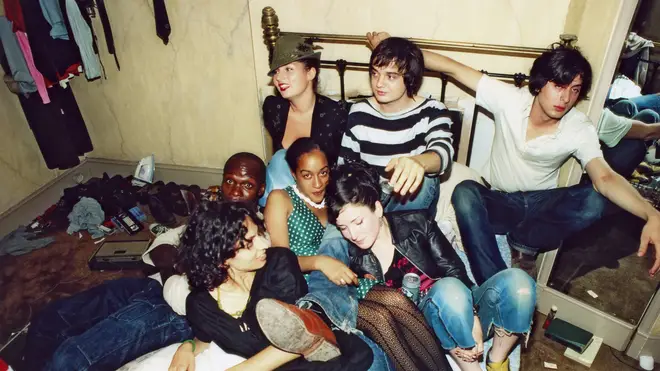
Their early shows were legendary for their intimacy and volatility, erasing the line between band and audience. These performances, along with their poetic lyrics and chaotic charm, gave birth to the band’s mythos. Central to it was the notion of “Albion” a dreamlike, idealised version of England infused with nostalgia, romanticism, and rebellion.
Bootleg demos like 'Legs XI' captured the heart of the Libertines' sound: tender, literate, and unpolished. Songs such as 'France', a wistful ballad, showcased Doherty’s lyrical depth, while 'Bangkok' revealed their raw, improvisational energy. Word spread through underground channels and passionate fan circles. Before long, The Libertines had become the face of a new kind of British rock, messy, magnetic, and unmistakably real.
The Albion Rooms were a huge part of the band's early days; they allowed the band to build a loyal fan base and create a sense of community. In an interview with Radio X, to celebrate 20 years of 'Up the Bracket', the band talked about the importance of this sanctuary.
Carl recalled the gigs: "Culturally it was really significant in terms of community... and there was a more mercantile aspect to it."
"Yeah, we were putting tenners on the door," Pete explained. "We made it so refreshments could be supplied for all."
Carl added: "There was a palpable excitement. It was like the Wild West. It was such an exciting time".
However, as the band's popularity grew and more revellers turned up at their door, Pete admitted they "started having problems with the neighbours".
"To be honest, I thought it was mental," recalled drummer Gary, "I'd turn up to a few. I remember turning up to one where the neighbour upstairs tried to break the door down with an axe."
‘Up the Bracket’ (2002): A Raw Declaration
Released in October 2002, 'Up the Bracket' was produced by Mick Jones of The Clash and served as a visceral introduction to The Libertines' world. The album’s frenetic energy and poetic lyrics painted vivid pictures of urban life and youthful disillusionment. Jones’s guidance was instrumental; he not only understood their chaotic charm but encouraged it, allowing spontaneity to reign in the studio. Sessions were unpredictable, often mirroring the emotional volatility of Doherty and Barât’s relationship. Fights, laughter, and sudden creative breakthroughs were common, making the recording process as volatile and electric as the songs themselves.
The Libertines approached the album with little regard for polish or perfection. Takes were chosen based on feeling rather than technicality, capturing moments that felt alive. The studio became a pressure cooker of raw ideas, drunken honesty, and unfiltered emotion. This album gave The Libertines a collection of songs that stood the test of time, and also propelled the idea of Albion and Arcadia to the masses.
‘Death on the Stairs’: A melancholic reflection on love and loss, showcasing Doherty's lyrical prowess and Barât’s melodic sense, interweaving themes of doomed romance and betrayal. The call-and-response vocals underscore their creative chemistry and emotional tension.
‘Vertigo’: Opens the album with a whirlwind of guitars and a sense of impending chaos, encapsulating the thrill and danger of youth. It sets the tone for a record teetering on the brink, charging headlong into the unknown.
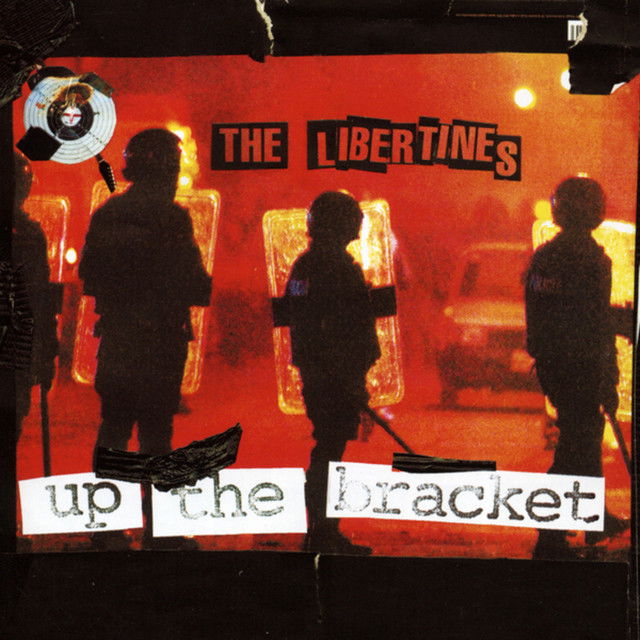
‘Time for Heroes’: Perhaps the album’s defining anthem, “Time for Heroes” distils the band’s ethos into three minutes of blistering urgency. Inspired by the May Day riots in London, where Doherty had witnessed police brutality firsthand, the track became a rallying cry for a generation disenfranchised by politics and apathetic culture. Lines like “Did you see the stylish kids in the riot?” and “There are fewer more distressing sights than that of an Englishman in a baseball cap” reflect a sneering mix of disillusionment and romanticism.
The song’s jagged riffs and breathless pace capture the feeling of being young, angry, and idealistic in a world that seems to have given up. It’s both a lament and a provocation, cementing that The Libertines were the voice of Britain's youth, and according to the press at the time, the next great British band.
‘Up the Bracket’: The title track delivers a punchy critique of societal constraints and inner-city violence, combining raw punk energy with London street poetry. It channels the band’s frustration and rebellious streak with uncompromising intensity. Also featured were ‘Boys in the Band’, a tongue-in-cheek jab at the groupie scene, and ‘Tell the King’, a more introspective look at friendship, loyalty, and the cost of ambition. Through all its rough edges and imperfect takes, 'Up the Bracket' radiates a desperate honesty, unfiltered rawness, and an unmistakable sense of Britishness.
The album’s rough charm, bolstered by its imperfections, was a breath of fresh air in an era dominated by slick, calculated releases. 'Up the Bracket' didn’t just announce The Libertines it felt like an incursion, a swaggering statement that something unpredictable and vital had arrived. Critics quickly embraced the record, heralding it as a raw, modern-day punk classic that resurrected the spirit of The Clash, The Jam, and The Smiths, but reimagined it for a disenchanted new generation. Fans clung to the mythology of the band, drawn to the chaotic friendship at its core and the romantic notion of Albion, the dreamlike England Doherty and Barât so often invoked.
But success didn’t temper their volatility. If anything, it magnified it. As their popularity grew, so did the intensity of their personal struggles. The Libertines’ gigs became notorious for their unpredictability; you never knew if you’d witness a transcendent performance or an on-stage implosion. The magnetism between Doherty and Barât could just as easily combust into physical fights as it could produce moments of electric unity.
Their increasing profile only accelerated the descent. Doherty’s growing issues with drugs, particularly crack cocaine and heroin, began to strain the band to breaking point. His erratic behaviour and frequent disappearances created rifts within the group, leaving Barât to shoulder the weight of shows and studio sessions alone. What began as a brotherhood started to fracture under the weight of addiction, mistrust, and the pressures of fame.
Turmoil and Betrayal (2003–2004): The Albion Hits the Rocks
As The Libertines’ fame surged, so too did the internal fractures threatening to tear them apart. At the centre of the turmoil was Pete Doherty’s growing dependence on crack and heroin, which increasingly alienated him from the band and strained his once-unbreakable bond with Carl Barât. What had begun as a partnership built on poetry, punk, and unshakable trust had devolved into a volatile, heartbreaking spectacle of self-destruction, betrayal, and spiralling paranoia. Their once-idealistic vision of Albion, their shared dream of freedom and brotherhood, was now clouded by secrecy, missed rehearsals, and mounting resentment.
The most infamous rupture came in July 2003. Feeling isolated, sidelined from rehearsals, and consumed by drug-fueled paranoia, Doherty broke into Barât’s flat in West London. In a desperate attempt to fund his addiction, he stole several personal items, including an antique guitar, a laptop, and a harmonica.
Doherty later confessed the theft to his then-girlfriend, singer Lisa Moorish, in a moment of guilt and unravelling desperation. The betrayal was devastating. For Barât, it wasn’t just a crime; it was the beginning of the end for their relationship.
Doherty was arrested, and though he was sentenced to six months in prison, he ultimately served two in Wandsworth. The image of Doherty behind bars seemed almost too perfect a metaphor: a man imprisoned by his own vices, cut off from the world and the band that had made him.
Yet even in incarceration, the music remained a lifeline. Removed from the whirlwind of touring, drugs, and toxic cycles, Doherty found himself stripped of everything but his aching desire to reconnect with his art and his band. Desperately searching for a guitar within the prison walls, it took him weeks to finally obtain one. When he did, the first song he played was ‘Don’t Look Back into the Sun.’ Alone in his cell, strumming its jubilant chords, Doherty reportedly broke down in tears, overwhelmed by a crushing cocktail of longing, guilt, and the sharp, inescapable ache of everything he had thrown away.
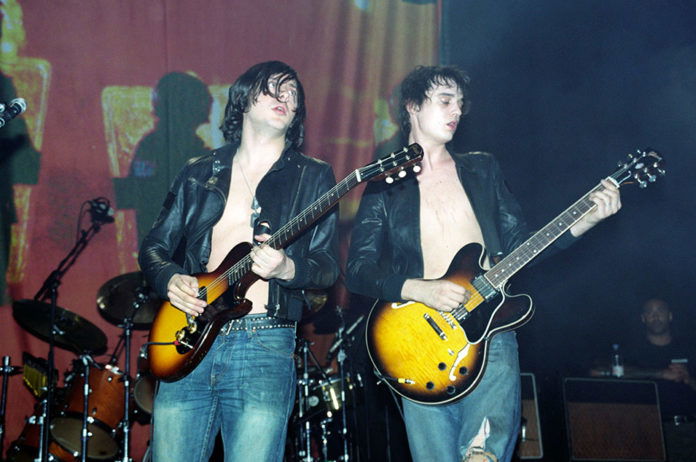
Released just weeks before his imprisonment, ‘Don’t Look Back into the Sun’ became a high watermark for The Libertines. Produced by Bernard Butler of Suede, the track was both an anthem and an elegy, its euphoric rush undercut by the melancholy baked into its title.
It captured the band at their most unified, even as they were quietly fracturing behind the scenes. Upon its release in August 2003, the single peaked at number 11 on the UK Singles Chart, a remarkable achievement for a band still existing slightly outside the mainstream, still more cult heroes than chart-toppers. The track received heavy airplay, resonating with a generation who saw in it not just a great indie anthem, but a snapshot of a band burning brightly and threatening to burn out.
Despite its success, the band’s public performances around the single were marred by Doherty’s absence. Most notably, The Libertines appeared on Top of the Pops to perform the song without him. Barât stood front and centre, singing alone, flanked by John Hassall on bass and Gary Powell on drums. The moment was surreal: a song born from the chaotic, combustible chemistry of Doherty and Barât, now performed as a fractured echo of its origins. It was a poignant, dissonant image. A band functioning on the surface but fundamentally incomplete.
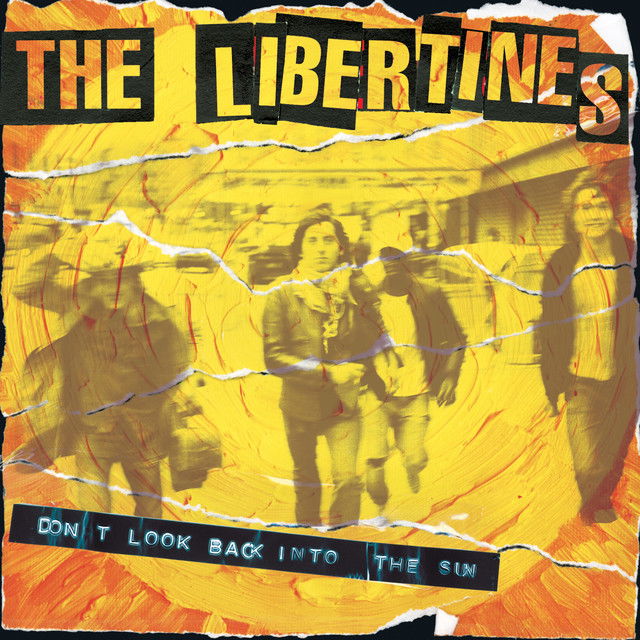
This period was both chaotic and creatively fertile, defined by profound contradiction: public adoration and private implosion; brotherhood and betrayal; freedom and entrapment. The Libertines had ceased to be just a band. They had become a living tragedy, playing out in real time.
Just when they should have been reaching their creative zenith, when the stages were getting bigger and the world was beginning to take proper notice, everything seemed to be falling apart. England, the very country that had embraced them, stood ready to crown them as legends, much like America had done for The Strokes two years earlier. The Libertines were poised to take it all, but instead, they found themselves crumbling under the weight of their own chaos.
However, the story wasn’t over.
‘The Libertines’ (2004): A Band on the Brink
Despite the personal turmoil and constant turbulence, The Libertines somehow managed to record their self-titled second album, released in August 2004. The record stands as a raw, poignant reflection of their fractured relationship, its lyrics steeped in regret, longing, and the remnants of a brotherhood hanging by a thread. The recording sessions were chaotic, frequently interrupted by Pete Doherty’s absences, his battles with addiction casting a long shadow over the process. Tensions in the studio were palpable, often teetering on the edge of violence. At times, it seemed the band was destined to implode entirely, as the struggle between creation and destruction became indistinguishable from their personal lives.
A major turning point came with Doherty’s release from prison. After his time in Wandsworth, he rejoined the band for the Freedom Gig, a chaotic yet electrifying performance that would go down as one of the most cathartic moments in Libertines history. That night, the band reunited with their fans in an explosion of energy and emotion. It was here that the now-iconic NME cover photo was taken.
Doherty and Barât share a cigarette, leaning into each other with a mixture of tenderness and defiance. The image became a perfect visual distillation of their mythos: two kindred spirits, locked together, unable to fully let each other go.
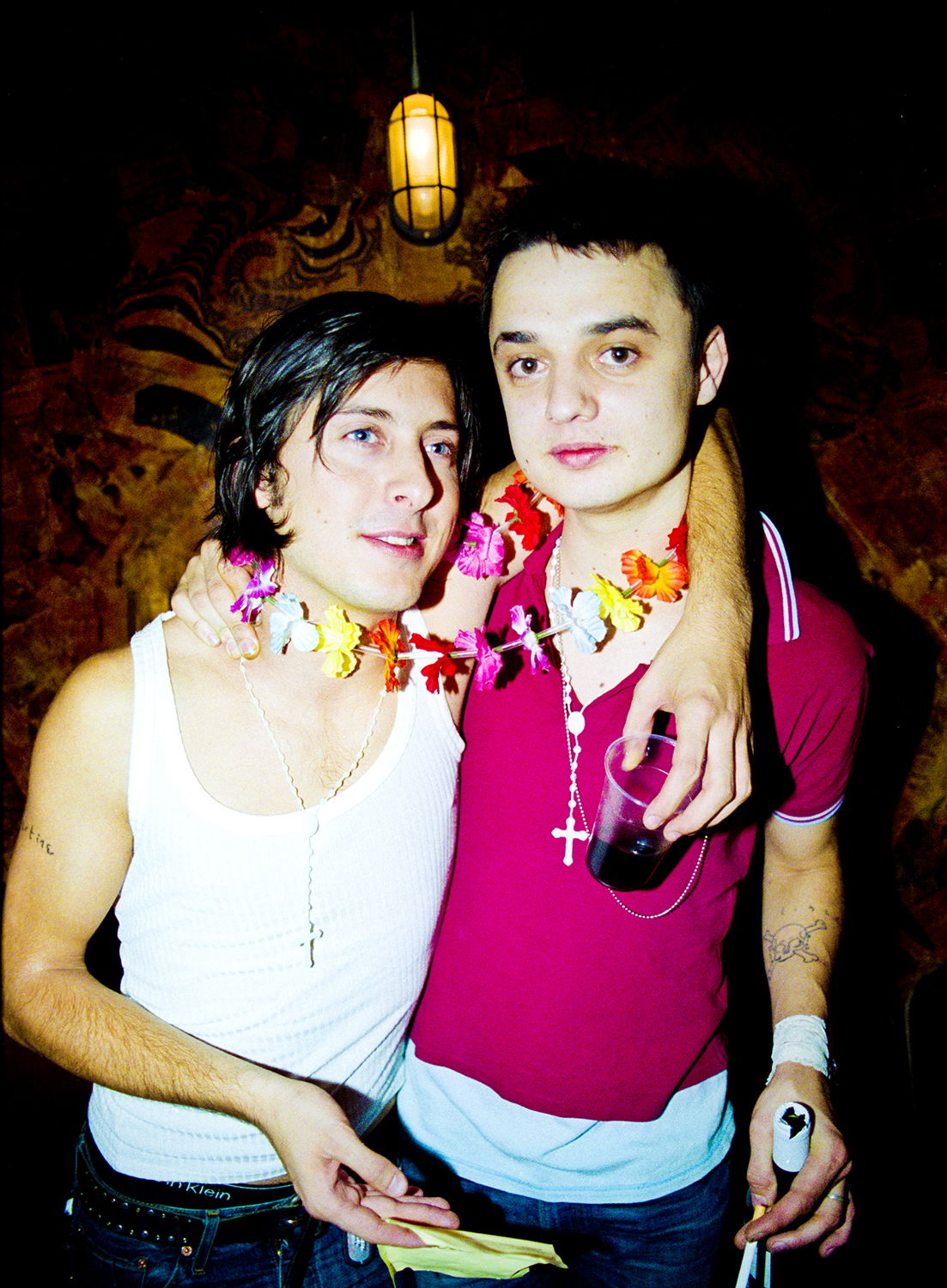
On the album itself, ‘Can’t Stand Me Now’ emerged as the defining anthem of their fractured partnership. More than just a song, it was a public reckoning. A raw, unfiltered duet between Doherty and Barât that laid bare the messy tangle of their friendship. Structured as a musical argument, its conversational lyrics and call-and-response delivery felt less like performance and more like two old friends finally saying the things they’d left unsaid for too long.
Every line was weighted with unspoken history, with pain and affection intertwined. One of the most striking moments came during the harmonica solo, played by Doherty himself. The harmonica had taken on a strange, almost mythic symbolism in their story. A year earlier, Doherty had stolen a harmonica from Barât’s flat during the infamous burglary. But there was another thread: at Christmas 2003, Barât had gifted harmonicas to all the band members, Doherty was once again a Libertine, so he got one too.
Other tracks on the album continued to explore the ache of lost innocence and the unravelling of their once-impenetrable camaraderie. ‘Music When the Lights Go Out’ painted a sombre, almost dreamlike portrait of fading unity. Its melancholy washed over the track like a slow, inevitable tide, with Barât’s vocals guiding a reflective lament about the collapse of friendships and ideals. The song captures the aching awareness that the band they once were, wild, hopeful, inseparable, was slipping further out of reach
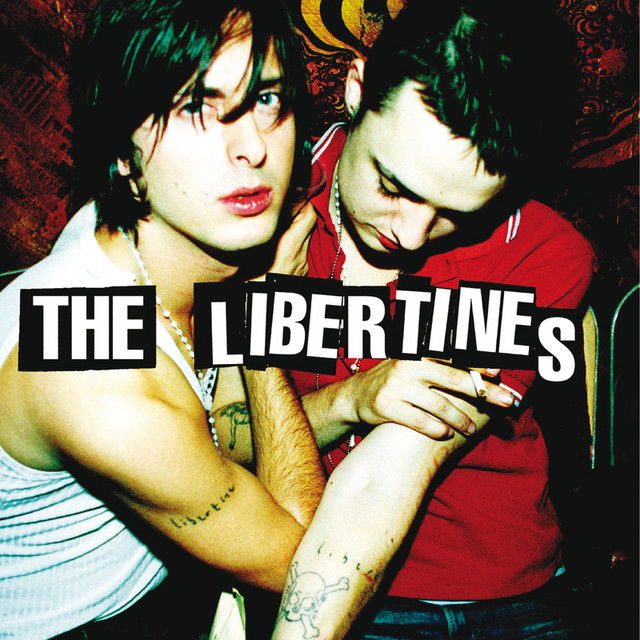
In contrast, ‘What Became of the Likely Lads’ cast a bitter, backwards glance at their early days, asking the titular question with a sting of regret. It’s a song about youthful idealism slowly curdling into disillusionment, about promises broken and friendships decaying under the weight of time and temptation. Beneath its rallying energy, there’s a deep sadness, a yearning for a world that could never be recaptured. The Libertines were still standing, but something essential had been lost.
One of the album’s more haunting moments is found in ‘The Man Who Would Be King’. Dense with intricate lyrics and steeped in a brooding, almost funereal atmosphere, the song feels like a slow-motion collapse. It’s a portrait of self-destruction, mirroring Doherty’s spiral and his painful awareness of the myth he was both chasing and becoming trapped within. The track feels like a cautionary tale whispered from within the storm.
Meanwhile, ‘Campaign of Hate’ delivered a sharp, scathing critique of the external pressures surrounding them. Its biting lyrics rail against the music industry, the press, and the suffocating weight of public scrutiny that had, by this point, warped their sense of identity. It’s a song laced with exhaustion, the sound of a band who had once stormed onto the scene with reckless freedom, now feeling cornered by the very machine that had propelled them. In its cynical pulse, you can hear the weight of fame becoming unbearable.
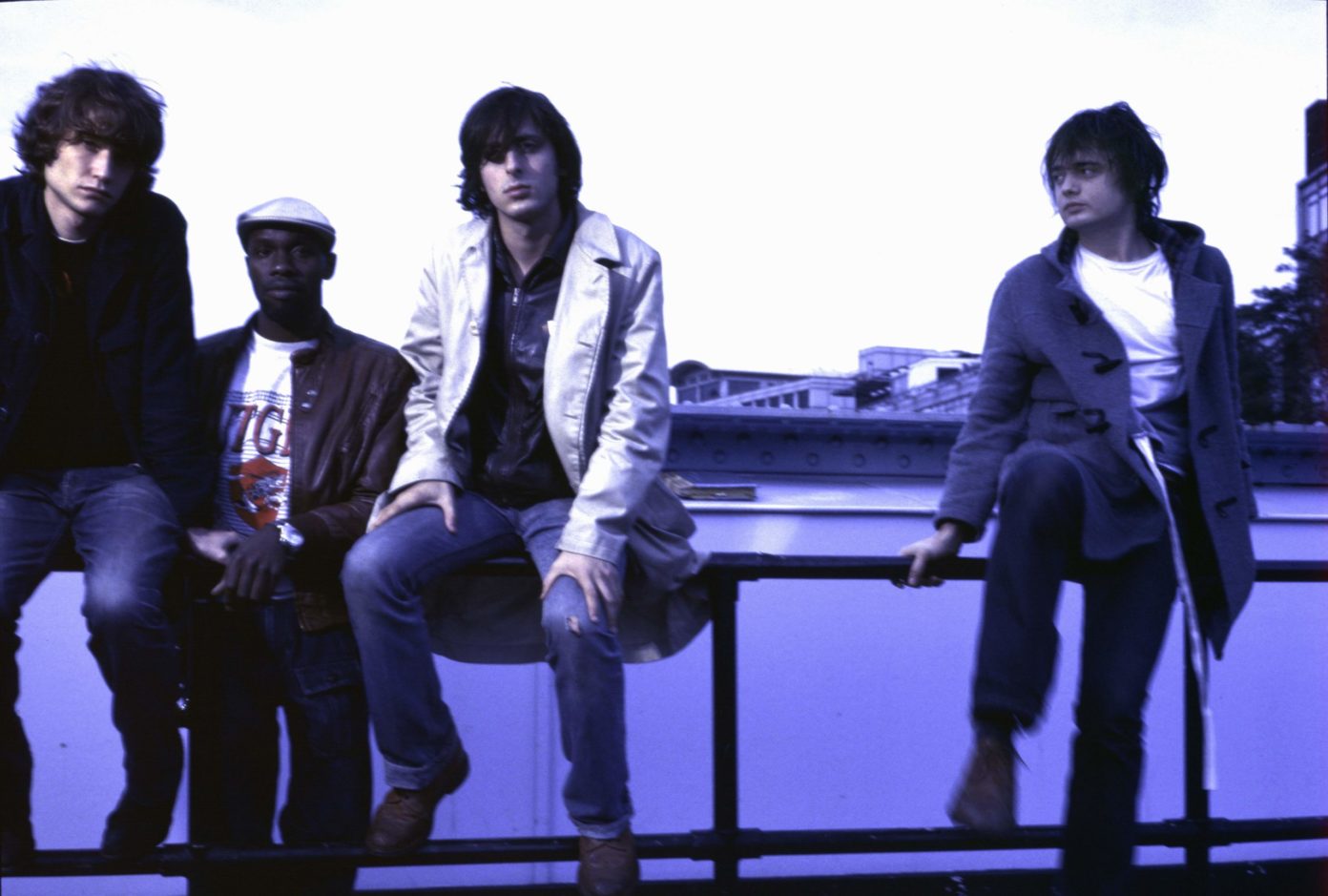
Despite the chaos, despite the fights, despite the ghosting absences and the near-collapse of the sessions, the album stands as a remarkable, unfiltered document of a band teetering on the edge. The Libertines captured the band at their most vulnerable, their most combustible, and paradoxically, their most brilliant. It wasn’t a polished record. It wasn’t supposed to be. It was messy, imperfect, and utterly alive. The sound of a band both breaking down and still somehow capable of something extraordinary.
NME called it "some of the most exhilarating and brilliant rock’n’roll of the past 20 years, destined to be glued to discerning CD-players everywhere from council estates to country estates." They knew, even then: “We won’t see their like again.”
And we didn’t see The Libertines for much longer. The recording of the second album had been turbulent to the point of being unsustainable. Security had to be hired to prevent Barât and Doherty from physically fighting in the studio. By the time the album was finished, Doherty was gone. He left the mixing and dubbing to the others; he never returned to the studio with The Libertines again.
Doherty had been making faltering attempts to combat his addictions. On May 14, 2004, he checked into The Priory, a high-profile rehab clinic, but he left early, unable to stick with the process. He returned briefly, only to walk out again on June 7. That same day, he went to a London club and spoke with Barât, with Hassall and Powell also present. Doherty told them he was going to Wat Tham Krabok, a remote monastery in Thailand, to undergo an unorthodox, gruelling detox program in a last-ditch effort to get clean.
After a short tour without Doherty to promote the album, The Libertines was over.
Hiatus and Side Projects (2005–2009): Separate Paths
In the wake of The Libertines' collapse, Doherty formed Babyshambles, channelling his struggles into a new musical outlet. Their debut album, Down in Albion (2005), was a raw, unfiltered collection of songs that captured Doherty’s ongoing battle with addiction and his search for redemption. One of the most striking tracks on the album, ‘Albion’, stood out not only for its lyrical depth but also for its history. The song had originally been written during the tail end of The Libertines' career and had been a part of their early demo sessions. It had never seen the light of day as a Libertines track, but its themes of longing and decay fit perfectly with the emotional weight Doherty carried into Babyshambles.
‘Albion’ was, in essence, a continuation of the poetic mythos that had defined Doherty’s earlier work, a melancholic tribute to his homeland, filled with the same sense of loss and nostalgia that had come to define The Libertines.
Meanwhile, ‘Fuck Forever’, another key track from the album, exemplified the raw energy and tragic romanticism that had characterised Doherty’s musical persona throughout his career. It, too, reflected his personal struggles and the disillusionment with fame, echoing the disintegrating relationship with Barât. However, ‘Albion’ was the song that truly spoke to the spirit of The Libertines. Its lush, wistful atmosphere and unfulfilled yearning captured the essence of what the band had stood for, even in their final, fractured days. The song’s inclusion in Down in Albion was a poignant reminder of the potential that still existed within the band’s fractured legacy.

While Doherty was navigating his personal demons, Carl Barât was moving forward with Dirty Pretty Things. Formed shortly after The Libertines’ dissolution, Dirty Pretty Things offered Barât a chance to step out of Doherty’s shadow and create something new. Their debut album, 'Waterloo to Anywhere' (2006), carried a spirit reminiscent of The Libertines but lacked the same raw emotional resonance. Tracks like ‘Bang Bang You’re Dead’ showcased Barât’s sharp songwriting abilities and his independence from Doherty, yet the album, for all its strengths, never quite captured the magic of the band they had once been.
Despite their separate musical pursuits, the spectre of The Libertines haunted both men. Doherty's chaotic lifestyle, marked by repeated arrests and a relentless cycle of addiction, often overshadowed his artistic output. Yet his acoustic sets, intimate and stripped-down performances, became legendary. Fans flocked to hear his renditions of Libertines classics, deep cuts, and unreleased gems
Barât, on the other hand, found some level of liberation in Dirty Pretty Things, but still carried the weight of his past with Doherty. The chemistry that had made The Libertines so magnetic was nowhere to be found in his new project. While 'Waterloo to Anywhere' showed promise, the album lacked the kind of raw, spontaneous energy that had defined The Libertines’ finest moments. Yet Barât’s sharp, sardonic wit was still present, even if the spirit of brotherhood and shared chaos had dissolved with Doherty’s departure.
Through it all, fans of The Libertines continued to hold onto the hope that one day, the magic of the band would be rekindled. As Doherty and Barât went their separate ways, the myth of The Libertines, rooted in poetic decay, fleeting youth, and tragic romance,was far from over. Both men would continue to struggle with their inner demons, but in the hearts of their fans, the story of The Libertines was still unfolding.
Reunion and Redemption (2010–2015)
When The Libertines announced their reunion in early 2010, it sent shockwaves through the music world. After six years of uncertainty, personal struggles, and fractured relationships, the news that the band was reuniting was met with a mix of excitement, anticipation, and disbelief. The Libertines had once been a symbol of chaos, brilliance, and youthful defiance, and their split in 2004 had left a void in the British music scene. Fans had longed for a reunion, but many wondered if the magic would still be there, especially given the years of turmoil.
The initial reunion announcement was a moment of euphoria for fans and the music community alike. It had been six years since ‘The Libertines’ album was released, and the world had changed drastically in that time. Yet, the longing for the band’s unique chemistry never faded. The news of their return felt almost mythical, like a reunion of lost heroes whose impact had never truly waned.
The band wasted no time in confirming that they would headline the Reading and Leeds Festivals later that summer, but before they took the stage at the iconic festivals, they decided to warm up with some intimate shows that would preview their return to form. On 31 March 2010, The Libertines held a press conference at the Boogaloo Pub in London to discuss their reformation. What was meant to be a formal announcement turned into something entirely unexpected: a full-blown “guerrilla gig”. The band picked up their instruments and began playing many of their old favourites, sending the gathered press and fans into a frenzy. It was a fitting, chaotic start to their return
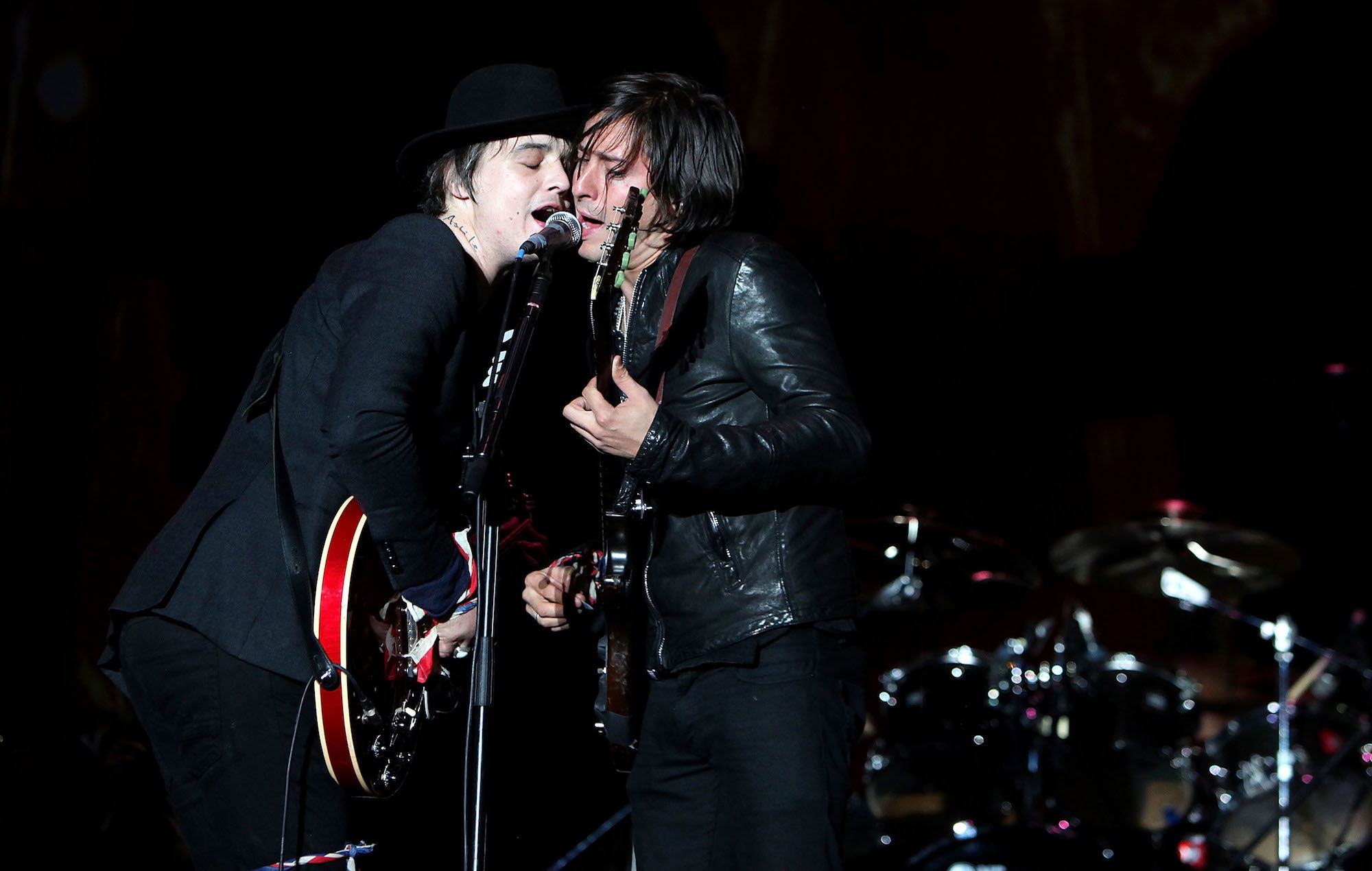
Following this, The Libertines kicked off their reunion with two special warm-up shows at the HMV Forum in London. The first show, on 24 August 2010, was a 300-strong rehearsal gig for friends, family, and members of the music press. This intimate gig allowed the band to shake off the rust and rehearse the classics, but it also gave the audience a chance to witness the magic of their reunion in person. It was raw, it was real, and it was clear that the chemistry between Doherty and Barât had not completely disappeared, despite the years apart.
The next night, on 25 August 2010, The Libertines performed a sold-out fans-only show at the same venue. This was the true test of their reunion: the devoted fans who had supported the band through thick and thin were now finally getting their chance to experience the moment they’d been waiting for.
These warm-up shows were more than just rehearsals; they were a reawakening of the spirit that had defined The Libertines from the beginning. As the band prepared for their headline slots at Reading and Leeds, it was clear that they weren’t just reliving the past; they were ready to embrace the present and, perhaps, even the future. Their reunion wasn’t just about nostalgia; it was about rekindling a fire that had never really gone out.
At Reading and Leeds, their performances were a mix of chaos and catharsis. With the world watching, The Libertines proved they still had the power to captivate an audience. Classics like ‘Time for Heroes’, ‘Can’t Stand Me Now’, and ‘Don’t Look Back into the Sun’ ignited the crowd, while ‘What a Waster’ delivered an anthem of youthful defiance. The set was a celebration of everything that had made them so beloved: raw energy, poetic lyrics, and a sense of rebellious freedom.
The performance at Reading & Leeds proved that The Libertines could still do it, and the people wanted more. However, Barat and Doherty still had other commitments to fill.
The Libertines were not over, though.
Reading & Leeds was just the beginning of this new chapter.
The most notable moment of their comeback came in 2014, when The Libertines performed a legendary headline gig at Hyde Park in London. Billed as a homecoming of sorts, the event marked a pivotal milestone, not just in their comeback but in their legacy. After a decade defined by chaos, collapse, and cult devotion, The Libertines were once again centre stage, not as a cautionary tale but as a band reborn.
For fans, the Hyde Park show was more than a gig, it was vindication. It had been ten years since the release of their self-titled second album and nearly as long since they had played together on such a grand scale. The very idea of the band surviving to see such a moment had once seemed improbable, if not impossible. Now here they were, defying the odds, reunited not just in name but in spirit.
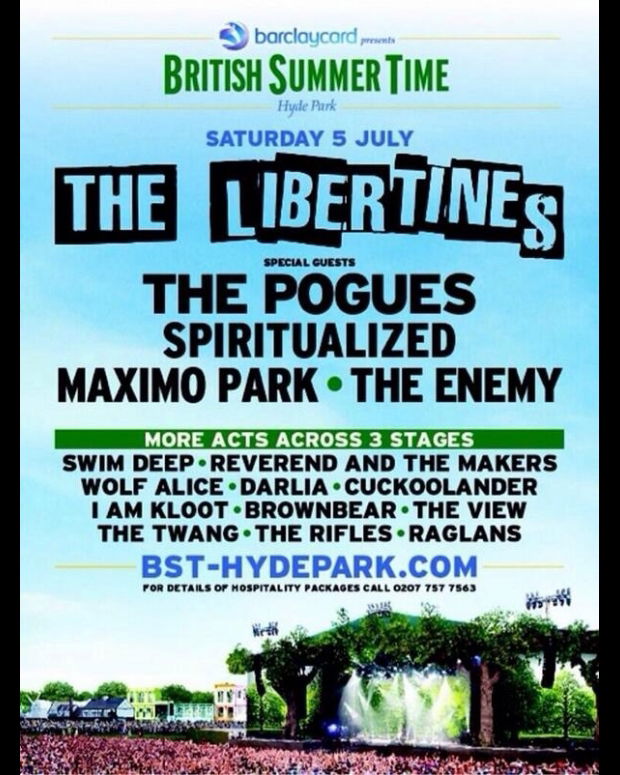
The Libertines were joined by an eclectic and era-spanning mix of support acts that made the day feel like a curated celebration of British indie and alternative music. The lineup featured legends like The Pogues and Spiritualized, established favourites such as Maximo Park, The Enemy, and Reverend and the Makers, as well as then-rising stars like Wolf Alice, Swim Deep, and The View. Others on the bill included I Am Kloot, Darlia, The Rifles, Cuckoolander, Brownbear, Raglans, and The Twang bands that either echoed The Libertines’ influence or shared their defiant ethos. The atmosphere was electric, more like a pilgrimage than a concert, with thousands descending on London to witness what many thought might never happen again.
The gig itself was everything it needed to be: chaotic and triumphant, messy and magnetic. The band opened with an explosive rendition of ‘Vertigo’, immediately setting the tone. As the sun dipped below the trees, they launched into fan favourites like ‘Can’t Stand Me Now’, ‘Time for Heroes’, and ‘Don’t Look Back into the Sun’, songs that had once felt like eulogies for a band lost to its own legend. Now they sounded like hymns of resurrection.
Perhaps the most poignant moment of the night came with ‘Albion’. As Doherty and Barât stood side by side, trading verses of their half-mythical ode to a crumbling Britain, the years of estrangement, addiction, and betrayal seemed to melt away. It was as if the band and the audience were reclaiming something sacred that had once been thought irreparably broken.
The concert wasn't flawless, there were missed cues, vocal slips and crowd troubles, which caused the gig to stop, but those moments are where The Libertines are at their best, when chaos could linger, but the camaraderie on stage, and the connection between band and audience is something indefinable. It's perhaps the closest the band have ever gotten to Arcadia.
In 2015, the band stepped in to be the Glastonbury super subs. The headliners, Foo Fighters, had been forced to pull out due to Dave Grohl's broken leg. Florence & the Machine were moved up to headliner, and The Libertines were tasked with being the substitutes, and they certainly filled that role.
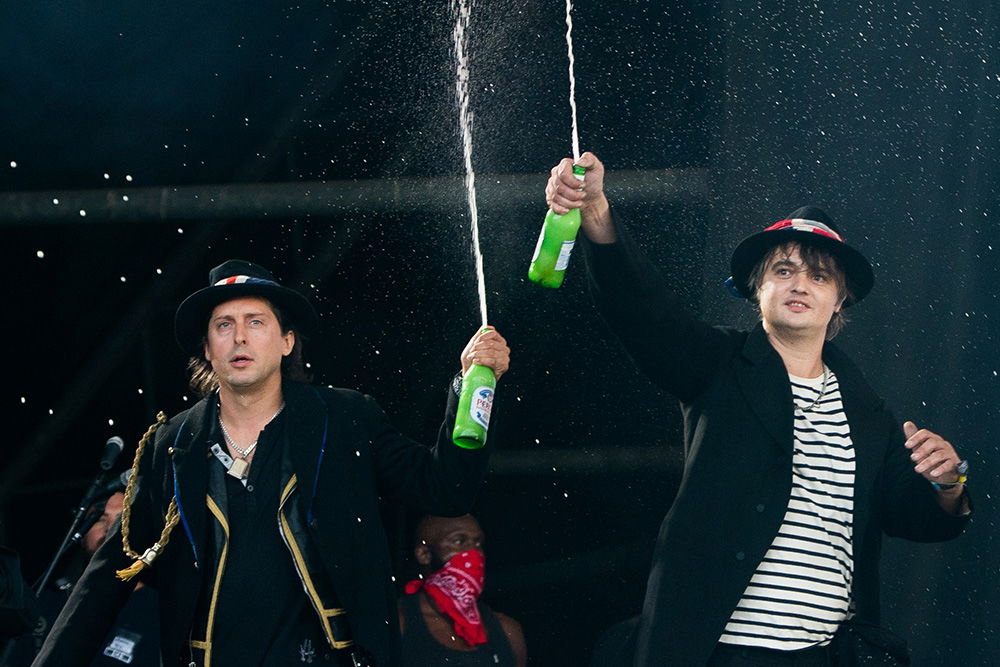
With the sun setting over the festival, The Libertines delivered a fiery set that felt like a cathartic release for both them and the audience. The atmosphere was electric, a sea of fans singing back every word as they tore through classics like ‘Don’t Look Back into the Sun’, ‘Time for Heroes’, and ‘Can’t Stand Me Now’. The Libertines were back, and they were here to stay.
Just before the festival, the band had announced a new album, and fans would hear the first outing of a song from that album in the form of 'Gunga Gin' at Glastonbury.
It wasn't just a performance for nostalgia's sake; it was a celebration of everything the band had been through and a signal that, as unpredictable as they were, The Libertines still had the power to captivate, move, and surprise.
In the months following Glastonbury, The Libertines further cemented their place as one of the UK's most enduring and unpredictable bands with the release of their third album, ‘Anthems for Doomed Youth’. Recorded in Thailand, the album represented a more polished, mature version of the band, but it still carried the raw, emotional intensity that had always been their trademark. Produced by Jake Gosling, the album was a departure from the chaotic, almost anarchic sound of their earlier work, showcasing a band that had grown and reflected deeply on their tumultuous past.
‘Anthems for Doomed Youth’ is a reflective and somewhat melancholic album, a contrast to the youthful energy that had defined their early days. But in many ways, it was also a redemption story, an exploration of survival, growth, and reconciliation. The songs on the album are deeply personal, addressing themes like lost innocence, personal demons, fame, and love. Key tracks include.
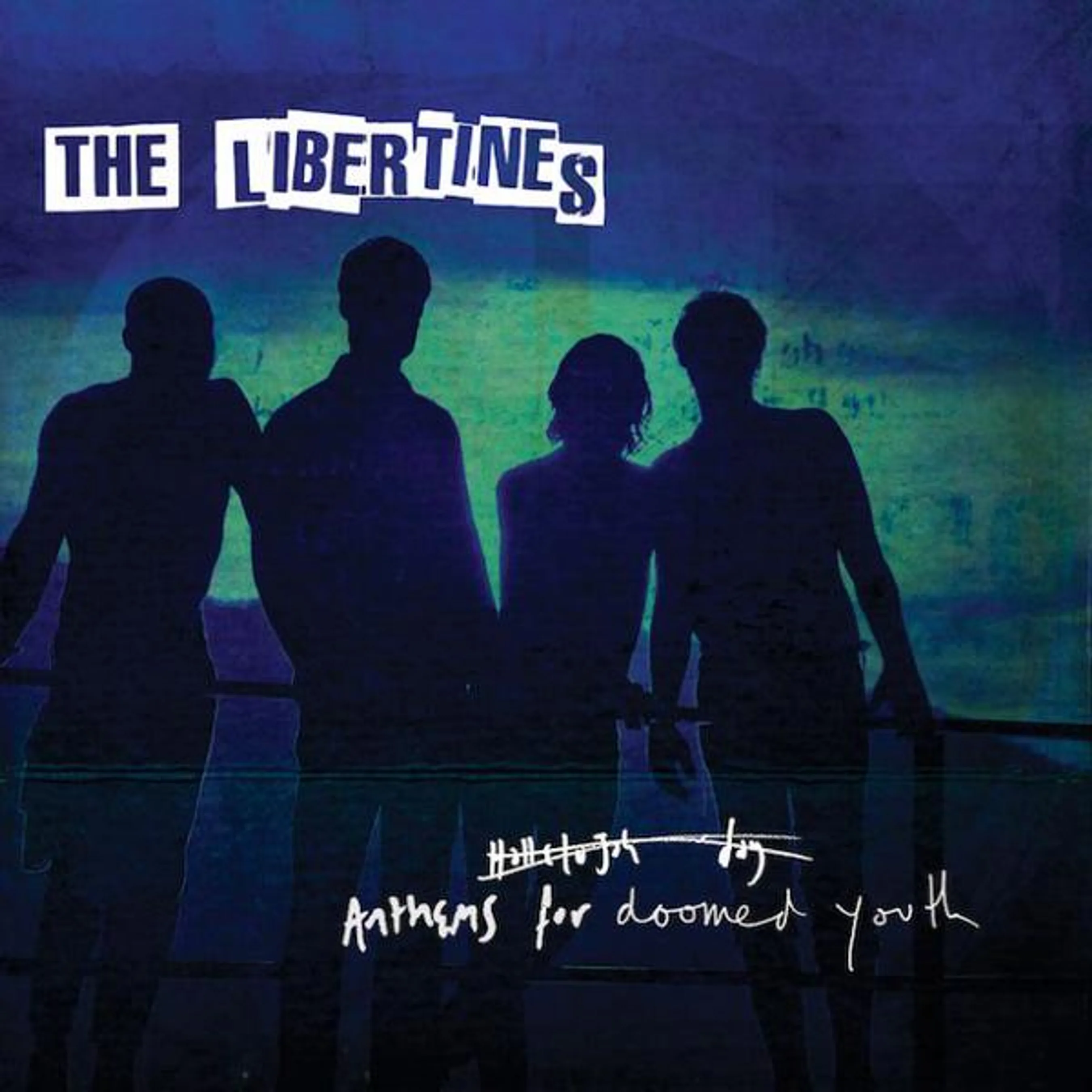
‘Gunga Din’: One of the album’s standout tracks, ‘Gunga Din’ addresses personal demons and the struggle for redemption. With its reggae-inflected rhythm, the track juxtaposes a sense of defiance with vulnerability. Lines like “Oh, the road to ruin is a long one” reflect a sense of inevitability, as though the band is coming to terms with their flaws and their past. Yet, despite its introspective nature, the song remains anthemic, a rallying cry for those trying to overcome their darker moments.
‘You’re My Waterloo’: Originally written in the early 2000s, ‘You’re My Waterloo’ became a pivotal track in the album’s narrative. The song reflects on love and reconciliation, with lyrics that speak to the enduring bond between Doherty and Barât. It feels like a turning point, a quiet acknowledgement that despite all that had happened, their friendship and the music they created together remained vital. The track’s stripped-down, tender arrangement allows the emotional weight of the lyrics to shine through.
Heart of the Matter’: A stark critique of media intrusion and personal accountability, ‘Heart of the Matter’ is perhaps one of the most confrontational with the public's perception of the band and its members. Doherty’s introspective lyrics delve into the complex relationship between the myth of The Libertines and the reality of their lives. The song’s sombre tone and lyrical complexity reveal a band that is no longer the chaotic youth they once were but has instead become self-aware, ready to face the consequences of their past while navigating the world on their own terms.
‘Barbarians’: The album’s opener, ‘Barbarians’, sets the tone for the record with its punchy guitar riffs and frenetic energy. The track speaks to the band’s rebellious spirit and their defiance against societal constraints. It’s a track that channels the spirit of their earlier work while acknowledging how the world and the band had changed.
The album, as a whole, was a statement of maturity, but it didn’t lose the rawness and vulnerability that made The Libertines so compelling in the first place. It was their most sonically polished album to date, but the emotional complexity of their songwriting made it feel deeply authentic, even when the band’s members were no longer the same young, reckless figures of the past. In many ways, ‘Anthems for Doomed Youth’ marked a moment of reconciliation not only with their past, but also with themselves and their fans. It was a statement that The Libertines had survived, they had grown, and they still had something powerful to say.
‘All Quiet on the Eastern Esplanade’ (2024): A New Dawn
In 2024, two decades after they first crashed into the public consciousness, The Libertines returned with ‘All Quiet on the Eastern Esplanade, ’ an album that feels less like a comeback and more like a hard-won arrival. Named after the Margate seafront that has become their creative refuge, the record is both a reflection and a reckoning. It captures the sound of a band no longer at war with itself, but not entirely at peace either, older, wiser, yet still chasing ghosts.
Recorded at their own Albion Rooms studio in Margate, once a dream, now a bricks-and-mortar reality, the album is drenched in seaside melancholy and post-recovery reflection. Where earlier works burned with youthful desperation, Eastern Esplanade breathes with the clarity of survival. There’s still chaos in the corners, but it’s more measured now, more deliberate. It's the sound of The Libertines, but it's more mature, and they sound better for it.
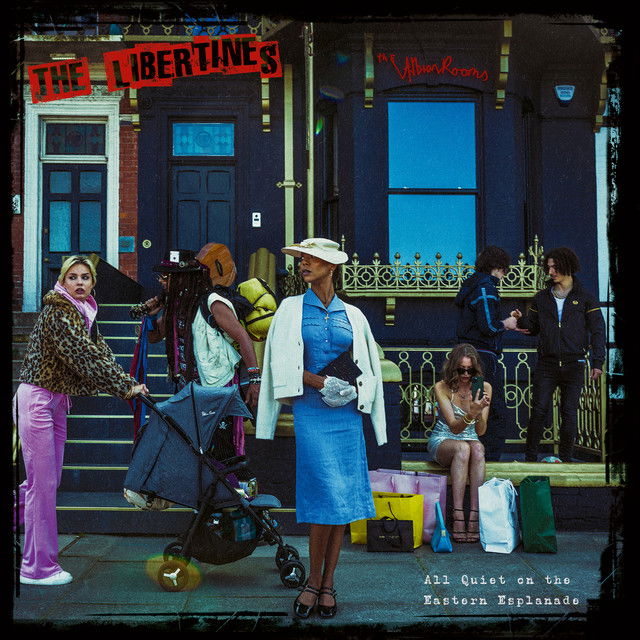
As the album’s urgent opener, ‘Run Run Run’ hits like a reawakening. With jagged riffs and punchy tempo, it’s The Libertines at their most electrifying, but beneath the raw energy lies something deeper: the tension between escape and endurance. The lyrics echo the instinct to flee from pain, addiction, fame, and even oneself, but unlike the breathless chaos of earlier years, this time there’s control, and even wisdom, in the execution. It’s a reminder that they haven’t forgotten how to set the room on fire. They’ve just learned not to burn it down.
‘Night of the Hunter is one of the most ambitious and cinematic songs they’ve ever recorded. With its brooding atmosphere and slowly creeping tension, ‘Night of the Hunter’ draws clear influence from the noir film of the same name, turning the track into a dark fable of temptation, pursuit, and survival. There’s menace in the guitars, paranoia in the rhythm, and a sense that something or someone is always closing in. For a band that once lived on the edge, this song reads like a reflection from the shadows, as though they’re recounting old sins under a streetlight flickering in the rain.
'Merry Old England' tackles the band's love of home in a similar way to 'Time For Heroes'. This time, in a more reflective way with its mid-pace and sighing strings, is a welcome letter to migrants that shows off a newfound maturity that they pull off seamlessly. ‘Shiver’ is an emotional gut-punch. Minimal and haunting, it might be the most vulnerable song on the album. Doherty’s vocal delivery is delicate, almost brittle, as he explores themes of regret, loneliness, and emotional detachment. There’s an intimacy to it that recalls early solo demos, but the arrangement is more mature, more deliberate. It doesn’t build toward a climax it lingers in a moment of cold, quiet reflection. Like much of the album, it suggests not all wounds heal, but some can at least be looked at without flinching.
‘I Have a Friend’ is a rather political olive branch to those suffering at the hands of the Russian invasion of Ukraine (“Follow the tracks in the mud down to where the Sea is Black with blood”).
‘Songs They Never Play on the Radio’, which was born in 2006 and finished for ‘All Quiet…’, one of the most beautiful Libertines songs of all time, if just for the tangible togetherness and enduring camaraderie we’re privileged to hear in real time. It's the sound of a band comfortable with their position in the world. For the first time in their career. This new sounding Libertines may just be the best version of the band.
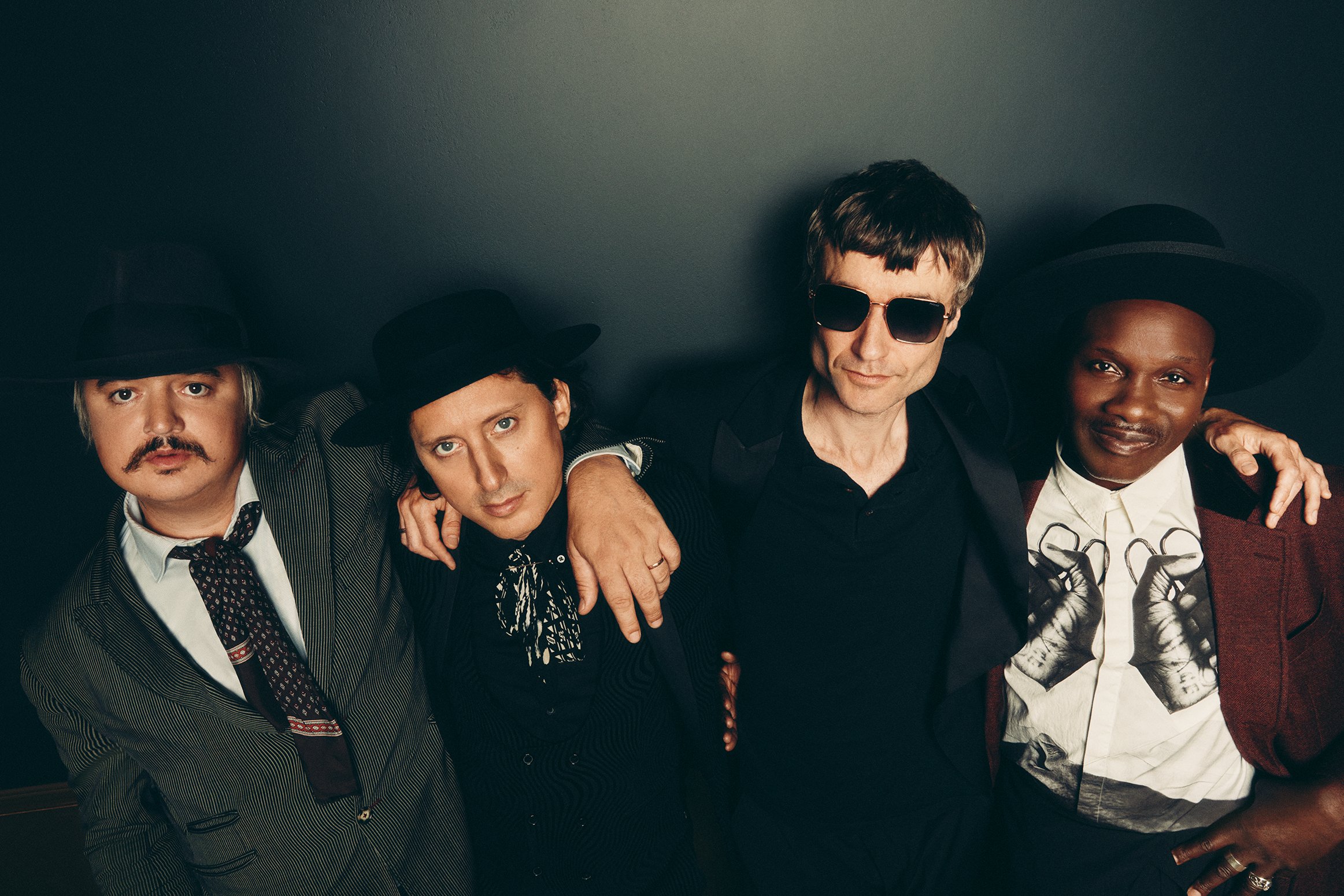
Personal Struggles and Redemption: Doherty’s Journey
Few stories in modern music are as steeped in public tragedy and private triumph as Pete Doherty’s. For years, his name was synonymous with tabloid chaos, addiction, and squandered brilliance. Crack and heroin robbed him of time, health, and trust. Turning a generational poet into a cautionary tale.
But in recent years, a quieter narrative has taken shape. Living in rural Normandy with his wife, Katia de Vidas, and their young daughter, Doherty has carved out a life that no one, perhaps not even he, once thought possible. He’s found sobriety, stability, and a form of serenity. His weight gain, once sensationalised by the media, became a symbol of health and healing. In interviews, he speaks with humour and candour about his past, and with clear-eyed purpose about his future.
He continues to perform and record, both solo and with The Puta Madres, delivering intimate, acoustic shows. In recent months, he has also teased a potential Babyshambles reunion; he and Barat are also now on great terms, and The Libertines have some huge gigs this summer. I think I speak for us all when I say having a fit and healthy Peter Doherty is a good thing for British music.
The Legacy of Albion: An Enduring Myth
At the heart of The Libertines’ story lies Albion, a mythical vision of England conjured from poetry, punk, and dreamlike decay. It's not just a setting, but a spiritual compass, guiding their songs and misadventures through every rise and fall. In Albion, truth and fiction blur. It’s a land where Arcadia coexists with Merry Old England, where dreams are inked in lager and cigarette ash, and where The Libertines operate best.
Albion is the band’s moral and creative centre, an ideal they chase, lose, and rediscover in each album, tour, and trial. From their earliest days scrawling lyrics in squats and navigating the chaos of Camden, to their most recent sessions in the salt-kissed air of Margate, the dream of Albion has endured. It’s stitched into every chord, every off-kilter harmony, every ragged anthem of rebellion and redemption.
Now, in 2025, The Libertines sail on, older, perhaps not wiser, but certainly more complete. The Good Ship Albion is no longer sinking; it’s simply moving at its own weathered pace, wind in its tattered sails, carrying its crew and its legend into yet another strange, beautiful horizon.